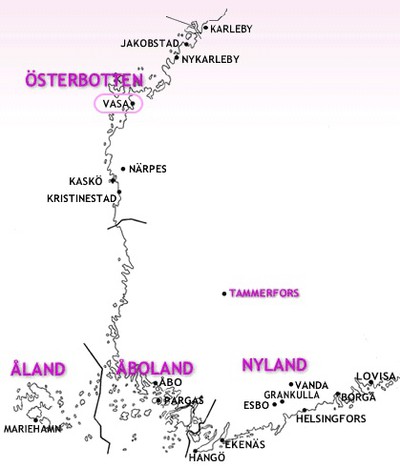The history of the Swedish language
Swedish-speaking settlers arrived in the coastal regions during the medieval time. Swedish kings established their rule in 1249.The area of present-day Finland became a fully consolidated part of the Swedish kingdom. Swedish became the dominant language of the nobility, administration and education; Finnish was mainly a language for the peasantry, clergy and local courts in predominantly Finnish-speaking areas.
Finnish and Swedish have been Finland's two official languages since 1922. An exception is the autonomous Åland archipelago whose sole official language is Swedish.
Today, 92% of the population speak Finnish as their native language, while Swedish is spoken by 5,6 %. Other minority languages are Sami, Russian, Estonian, Finnish Romani and Finnish sign language.
The southern and western coastal regions inhabit most of the Swedish-speaking Finns, therefore many of the cities and towns are named in two languages, and in the towns where Swedish is still widely spoken, the streets also carry the names in both languages. See here a list of the names of the towns in Finland in both Finnish and Swedish. See here a list of the names of the municipalities in Finland.
The constitution in Finland protects the rights of the minority groups (the Swedish-speaking Finns, the Sami and the Romani people) to maintain their culture and their languages and the act stipulates that a Finn may use either of these two languages (Swedish and Finnish) in a court of law and may obtain all pertinent legal or official documents in that language.
Map over the Swedish speaking areas in Finland





